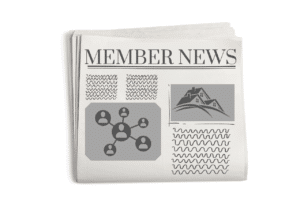The National Council of Housing Market Analysts (NCHMA) made the most of a day on Tuesday, March 31, when it hosted its 2015 Spring Meeting in Washington, DC. It was difficult to find an empty seat in NH&RA Conference Center, where market analysts, appraisers, lenders, syndicators, developers, HUD officials, and others gathered to discuss ways to streamline and improve U.S Department of Housing and Urban Development (HUD) and LIHTC underwriting market analysis. Participants also considered ways market analysts could collaborate better with industry partners and clients.
The day’s first session included a timely discussion of the draft, revised Multifamily Accelerated Processing (MAP) Guide that HUD released last month. HUD is seeking comments on the draft through April 30, and NCHMA Spring Meeting provided the perfect opportunity to bring together many industry perspectives. HUD’s Deputy Director of Multifamily Production, Dan Sullivan, and Tom Bernaciak, the Division’s Director of Technical Support, joined fellow panelists Rachel Denton (Novogradac) and Michele Levoir-Sloan (Prudential) to discuss the MAP Guide and market study requirements. NCHMA FHA Committee Chair Bob Lefenfeld, who has spearheaded an ongoing conversation with HUD to shape the MAP guide and train underwriters on market analysis, moderated the session. The panelists discussed ways to better align the MAP Guide with industry practices, such as standardizing language and better defining the parameters of a market study’s lifespan. Based on the discussion and input from conference participants, NCHMA will prepare comments to submit to HUD by April 30.
The panel that followed continued NCHMA’s dialogue with HUD officials. The Chief Underwriter for HUD’s Baltimore Field Office, Rich Harding, talked with Jonette Hahn (CohnReznick), Steve Rudow (AGM Financial Services), and Sharon Wilson Géno (Ballard Spahr) about the progress of the HUD Multifamily Transformation including the impact of the Department’s new single underwriting model. Harding outlined how the new model will function, from the methodology used to screen applications to who will conduct their review. Harding gave practical advice to participants for the transition, encouraging market analysts to “hold [the underwriter’s] hand through the study.” He offered the following suggestions:
- Explain conclusions. If something is “good,” explain what “good” means.
- Reconcile demand. The application should incorporate all aspects of the demand indicators, not just capture rate.
- Clearly define the market area.
Harding explained that lenders will receive guidance at the beginning of their region’s wave of the Transformation. The session also discussed the role of new technologies under the HUD Transformation and the impact the Transformation will have on the Economic and Market Analysis Division (EMAD).
Following a networking lunch, a panel discussion organized by the NCHMA Advisory Council kicked-off the afternoon’s sessions. The diverse panel featured Dwayne George (Freddie Mac), Doug Koch (Dauby O’Connor & Zaleski), Arthur Krauer (Testa Companies), and Abhisek Mitra (US Bancorp), to discuss how lenders, developers, investors and due diligence providers assess markets and underwriting multifamily transactions. Mitra reminded conference attendees that “good market data is key to the sustainability of the market as a whole” and the panelists encouraged NCHMA to explore ways to improve on reporting of operating expenses, including utility and staff breakdowns and Area Median Income (AMI) trending.
The last two sessions of the day took a deep dive into key market study topics: determining market area, capture rates, and penetration rates. Market analysts Beth Beckett (Real Estate Strategies) and Andrew Mazak (Vogt Santer Insights) joined Matt Barcello, who’s part of the due diligence practice at CohnReznick, and Nancy Pearce, who works in risk management for the Community Affordable Housing Equity Corporation, for a panel of determining appropriate market area. Mazak outlined the red flags included in the NCHMA Determining Market Area white paper. The panelists also discussed differences in rural and urban areas and when it’s appropriate to use a secondary market area.
Tad Scepaniak (Real Property Research Group) began the final panel of the day with the NCHMA definition of capture rate:
The percentage of age, size, and income qualified renter households in the primary market area that the property must capture to fill the units. The capture rate is calculated by dividing the total number of units at the property by the total number of age, size, and income qualified renter households in the primary market area.
Scepaniak and fellow panelists Bud Clarke (Boston Financial Investment Management) and Galen Raza-Self (PNC Multifamily Capital) discussed how to determine minimum age for seniors, slotting demand by bedroom, and the impact of income limits. They reminded conference participants that just because the capture rates look good, doesn’t mean the proposed rents are good. Following their discussion of capture rate, the group turned to penetration rate. Once again, they consulted the NCHMA Market Study Terminology for a definition:
The percentage of age and income qualified renter households in the primary market area that all existing and proposed properties, to be completed within six months of the subject, and which are competitively priced to the subject that must be captured to achieve the stabilized level of occupancy.
After considering the uses and shortcomings of penetration rates, the panel urged market analysts to avoid using capture and penetration rates exclusively. They reminded conference participants of a number of other factors, from comparable pipeline to local economic conditions, to consider. The group also looked at unexpected conditions, such as when rents go down instead of up over time.
After a full-day of dialogue-packed sessions and networking opportunities, NCHMA Spring Meeting conference attendees headed home with new business relationships and perspectives to inform and improve their work. The National Council of Housing Market Analysts will meet again this fall on September 9-10 in Columbus, OH. For more information, click here.
